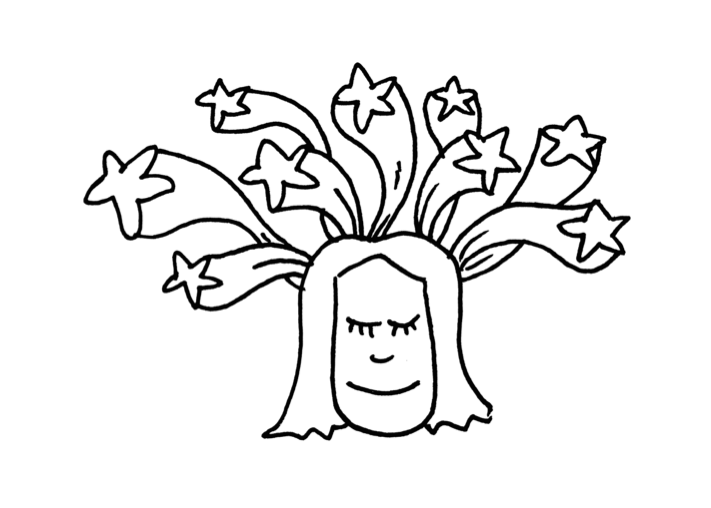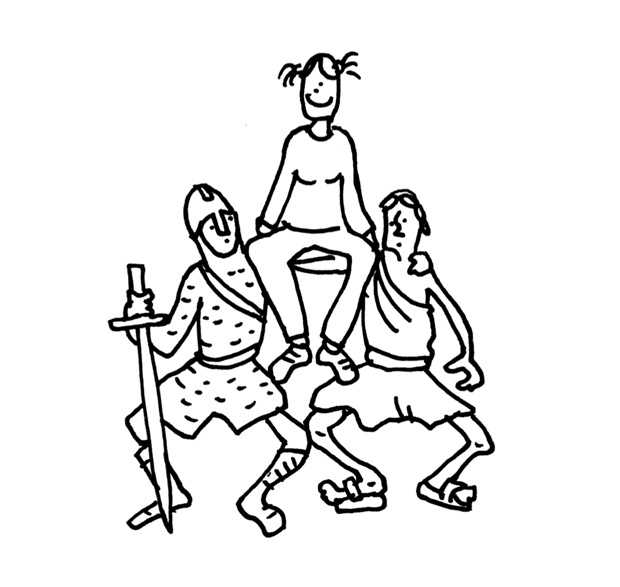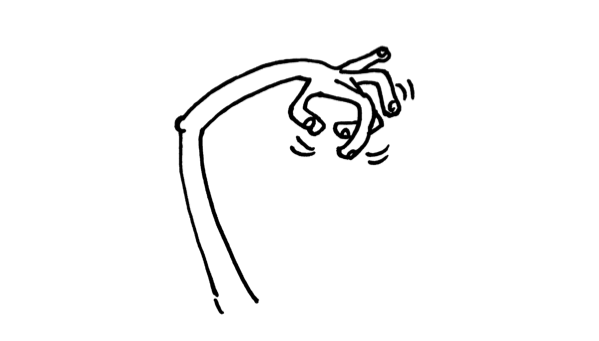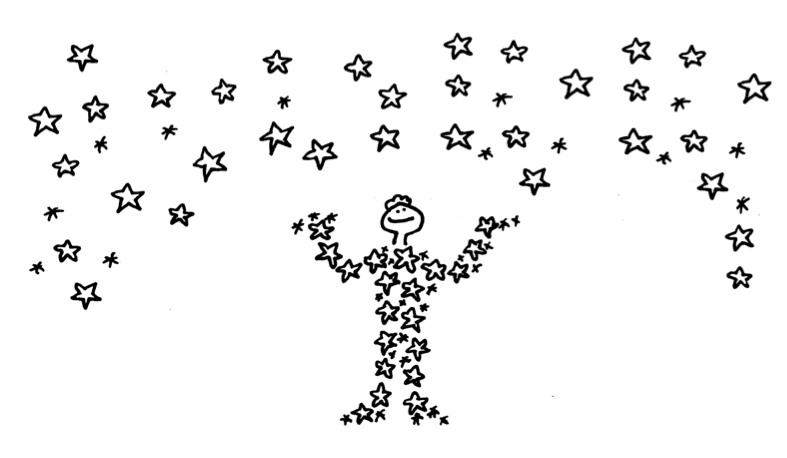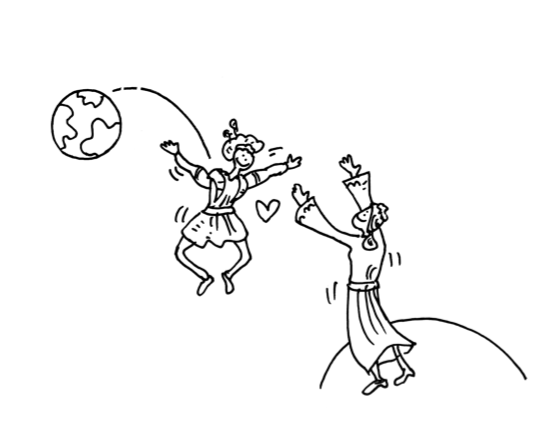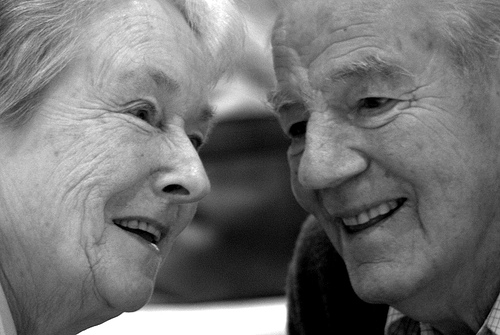
Scientists and Philosophers Answer Kids’ Most Pressing Questions About How the World Works
by Maria Popovahttp://www.brainpickings.org/index.php/2012/11/05/big-questions-from-little-people/Why we fall in love, what we’re all made of, how dreams work, and more deceptively simple mysteries of living.
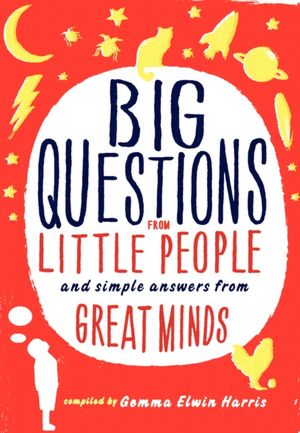 “If you wish to make an apple pie from scratch,”Carl Sagan famously observed in Cosmos, “you must first invent the universe.” The questions children ask are often so simple, so basic, that they turn unwittingly yet profoundly philosophical in requiring apple-pie-from-scratch type of answers. To explore this fertile intersection of simplicity and expansiveness,Gemma Elwin Harris asked thousands of primary school children between the ages of four and twelve to send in their most restless questions, then invited some of today’s most prominent scientists, philosophers, and writers to answer them. The result is Big Questions from Little People & Simple Answers from Great Minds (public library) — a compendium of fascinating explanations of deceptively simple everyday phenomena, featuring such modern-day icons asMary Roach, Noam Chomsky, Philip Pullman, Richard Dawkins, and many more, with a good chunk of the proceeds being donated to Save the Children.
“If you wish to make an apple pie from scratch,”Carl Sagan famously observed in Cosmos, “you must first invent the universe.” The questions children ask are often so simple, so basic, that they turn unwittingly yet profoundly philosophical in requiring apple-pie-from-scratch type of answers. To explore this fertile intersection of simplicity and expansiveness,Gemma Elwin Harris asked thousands of primary school children between the ages of four and twelve to send in their most restless questions, then invited some of today’s most prominent scientists, philosophers, and writers to answer them. The result is Big Questions from Little People & Simple Answers from Great Minds (public library) — a compendium of fascinating explanations of deceptively simple everyday phenomena, featuring such modern-day icons asMary Roach, Noam Chomsky, Philip Pullman, Richard Dawkins, and many more, with a good chunk of the proceeds being donated to Save the Children.Alain de Botton explores why we have dreams:
Most of the time, you feel in charge of your own mind. You want to play with some Lego? Your brain is there to make it happen. You fancy reading a book? You can put the letters together and watch characters emerge in your imagination.But at night, strange stuff happens. While you’re in bed, your mind puts on the weirdest, most amazing and sometimes scariest shows.[…]In the olden days, people believed that our dreams were full of clues about the future. Nowadays, we tend to think that dreams are a way for the mind to rearrange and tidy itself up after the activities of the day.Why are dreams sometimes scary? During the day, things may happen that frighten us, but we are so busy we don’t have time to think properly about them. At night, while we are sleeping safely, we can give those fears a run around. Or maybe something you did during the day was lovely but you were in a hurry and didn’t give it time. It may pop up in a dream. In dreams, you go back over things you missed, repair what got damaged, make up stories about what you’d love, and explore the fears you normally put to the back of your mind.Dreams are both more exciting and more frightening than daily life. They’re a sign that our brains are marvellous machines — and that they have powers we don’t often give them credit for, when we’re just using them to do our homework or play a computer game. Dreams show us that we’re not quite the bosses of our own selves.
Evolutionary biologist Richard Dawkins breaks down the math of evolution and cousin marriages to demonstrate that we are all related:
Yes, we are all related. You are a (probably distant) cousin of the Queen, and of the president of the United States, and of me. You and I are cousins of each other. You can prove it to yourself.Everybody has two parents. That means, since each parent had two parents of their own, that we all have four grandparents. Then, since each grandparent had to have two parents, everyone has eight great-grandparents, and sixteen great- great-grandparents and thirty-two great-great-great-grandparents and so on.You can go back any number of generations and work out the number of ancestors you must have had that same number of generations ago. All you have to do is multiply two by itself that number of times.Suppose we go back ten centuries, that is to Anglo-Saxon times in England, just before the Norman Conquest, and work out how many ancestors you must have had alive at that time.If we allow four generations per century, that’s about forty generations ago.Two multiplied by itself forty times comes to more than a thousand trillion. Yet the total population of the world at that time was only around three hundred million. Even today the population is seven billion, yet we have just worked out that a thousand years ago your ancestors alone were more than 150 times as numerous.[…]The real population of the world at the time of Julius Caesar was only a few million, and all of us, all seven billion of us, are descended from them. We are indeed all related. Every marriage is between more or less distant cousins, who already share lots and lots of ancestors before they have children of their own.
By the same kind of argument, we are distant cousins not only of all human beings but of all animals and plants. You are a cousin of my dog and of the lettuce you had for lunch, and of the next bird that you see fly past the window. You and I share ancestors with all of them. But that is another story.
Neuroscientist David Eagleman explains why we can’t tickle ourselves:
To understand why, you need to know more about how your brain works. One of its main tasks is to try to make good guesses about what’s going to happen next. While you’re busy getting on with your life, walking downstairs or eating your breakfast, parts of your brain are always trying to predict the future.Remember when you first learned how to ride a bicycle? At first, it took a lot of concentration to keep the handlebars steady and push the pedals. But after a while, cycling became easy. Now you’re not aware of the movements you make to keep the bike going. From experience, your brain knows exactly what to expect so your body rides the bike automatically. Your brain is predicting all the movements you need to make.You only have to think consciously about cycling if something changes — like if there’s a strong wind or you get a flat tyre. When something unexpected happens like this, your brain is forced to change its predictions about what will happen next. If it does its job well, you’ll adjust to the strong wind, leaning your body so you don’t fall.Why is it so important for our brains to predict what will happen next? It helps us make fewer mistakes and can even save our lives.[…]Because your brain is always predicting your own actions, and how your body will feel as a result, you cannot tickle yourself. Other people can tickle you because they can surprise you. You can’t predict what their tickling actions will be.And this knowledge leads to an interesting truth: if you build a machine that allows you to move a feather, but the feather moves only after a delay of a second, then you can tickle your- self. The results of your own actions will now surprise you.
Particle physicist and cosmologist Lawrence Krauss explains why we’re all made of stardust:
Everything in your body, and everything you can see around you, is made up of tiny objects called atoms. Atoms come in different types called elements. Hydrogen, oxygen and carbon are three of the most important elements in your body.[…]How did those elements get into our bodies? The only way they could have got there, to make up all the material on our Earth, is if some of those stars exploded a long time ago, spew- ing all the elements from their cores into space. Then, about four and a half billion years ago, in our part of our galaxy, the material in space began to collapse. This is how the Sun was formed, and the solar system around it, as well as the material that forms all life on earth.So, most of the atoms that now make up your body were created inside stars! The atoms in your left hand might have come from a different star from those in your right hand. You are really a child of the stars.
But my favorite answers are to the all-engulfing question, How do we fall in love? Author Jeanette Winterson offers this breathlessly poetic response:
You don’t fall in love like you fall in a hole. You fall like falling through space. It’s like you jump off your own private planet to visit someone else’s planet. And when you get there it all looks different: the flowers, the animals, the colours people wear. It is a big surprise falling in love because you thought you had everything just right on your own planet, and that was true, in a way, but then somebody signalled to you across space and the only way you could visit was to take a giant jump. Away you go, falling into someone else’s orbit and after a while you might decide to pull your two planets together and call it home. And you can bring your dog. Or your cat. Your goldfish, hamster, collection of stones, all your odd socks. (The ones you lost, including the holes, are on the new planet you found.)And you can bring your friends to visit. And read your favourite stories to each other. And the falling was really the big jump that you had to make to be with someone you don’t want to be without. That’s it.PS You have to be brave.
Evolutionary psychologist and sociologist Robin Dunbar balances out the poetics with a scientific look at what goes on inside the brain when we love:
What happens when we fall in love is probably one of the most difficult things in the whole universe to explain. It’s something we do without thinking. In fact, if we think about it too much, we usually end up doing it all wrong and get in a terrible muddle. That’s because when you fall in love, the right side of your brain gets very busy. The right side is the bit that seems to be especially important for our emotions. Language, on the other hand, gets done almost completely in the left side of the brain. And this is one reason why we find it so difficult to talk about our feelings and emotions: the language areas on the left side can’t send messages to the emotional areas on the right side very well. So we get stuck for words, unable to describe our feelings.But science does allow us to say a little bit about what happens when we fall in love. First of all, we know that love sets off really big changes in how we feel. We feel all light-headed and emotional. We can be happy and cry with happiness at the same time. Suddenly, some things don’t matter any more and the only thing we are interested in is being close to the person we have fallen in love with.These days we have scanner machines that let us watch a person’s brain at work. Different parts of the brain light up on the screen, depending on what the brain is doing. When people are in love, the emotional bits of their brains are very active, lighting up. But other bits of the brain that are in charge of more sensible thinking are much less active than normal. So the bits that normally say ‘Don’t do that because it would be crazy!’ are switched off, and the bits that say ‘Oh, that would be lovely!’ are switched on.Why does this happen? One reason is that love releases certain chemicals in our brains. One is called dopamine, and this gives us a feeling of excitement. Another is called oxytocin and seems to be responsible for the light-headedness and cosiness we feel when we are with the person we love. When these are released in large quantities, they go to parts of the brain that are especially responsive to them.But all this doesn’t explain why you fall in love with a particular person. And that is a bit of a mystery, since there seems to be no good reason for our choices. In fact, it seems to be just as easy to fall in love with someone after you’ve married them as before, which seems the wrong way round. And here’s another odd thing. When we are in love, we can trick ourselves into thinking the other person is perfect. Of course, no one is really perfect. But the more perfect we find each other, the longer our love will last.
Big Questions from Little People is a wonderful complement to The Where, the Why, and the How: 75 Artists Illustrate Wondrous Mysteries of Science and is certain to give you pause about much of what you thought you knew, or at the very least rekindle that childlike curiosity about and awe at the basic fabric of the world we live in.

